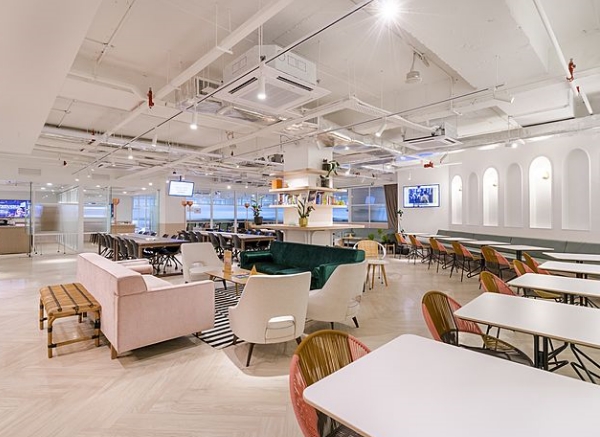While most workplaces seem to be designed for the extrovert, it pays to create a more conducive environment that encourages the introvert’s participation as well.
Generally, people are categorised as being either an introvert or an extrovert. Granted, we have also become aware of the “ambivert†and “omnivert†categories more recently coined, but as the two latter personality types share the same traits as the two original types, they are less polarising on the social interaction spectrum. Nonetheless, recognising these traits in colleagues or team members at the office can only be beneficial when the extrovert and the introvert at work are able to collaborate in a way that brings out their full potential.
Because their brains work differently, extroverts and introverts usually operate differently when it comes to workplace collaboration. Extroverts are usually known for being more outgoing, sociable, and seem more enthusiastic, but they can also be impulsive, too much in the moment, and may not think some things through. However, they are comfortable with holding people’s attention, so big meetings, brainstorming sessions and presentations are nothing to be afraid of for them.
Not that introverts are afraid of meetings, brainstorming and presentations per se, but these are usually not events that introverts look forward to if we’re to follow normal introvert conventions. They are usually seen as being more reserved, prefer smaller groups rather than larger ones, and don’t speak up unless prompted. However, at the workplace, introverts might give valuable insights as they are generally good listeners, are observant, and take their time processing information.
As found in a 2019 study by the University of Toronto, most workplaces are geared for extroverts rather than introverts. However, there is usually a balance of extroverts and introverts in the same company, or even team, and the contributions of the quiet coworker should not be ignored or undermined just because they don’t speak up. Playing to the strengths of both extroverts as well as introverts in discussions or projects could ultimately lead to better innovation, creativity, productivity and efficiency in a team project or a business.
Bringing Out The Best In The Extrovert And The Introvert At Work
 Admittedly, it can be difficult for employers or team leaders to tailor their leadership or working style to fit the different personalities of team members. According to Francesca Gino, a professor at Harvard Business School, extroverts are comfortable taking risks and multi-tasking, while introverts are more deliberate in almost anything they do and will focus on one single task at a time. However, engaging with team members based on their personalities can be advantageous, with certain company practices that managers can consider to allow better collaboration between extroverts and introverts at work.
Practices that can lead to better extrovert-introvert collaboration at work include:-
1. Scheduling and conducting less meetings
As mentioned by Susan Cain, author of the book Quite: The Power Of Introverts In A World That Can’t Stop Talking, workers need ample uninterrupted work time. With too many meetings, this could interrupt their work process, be it for introverts or extroverts. Meetings should also be scheduled well in advance to give time for everyone involved to prepare, but also particularly for the introvert to feel less overwhelmed compared to when something is sprung up on them. This also allows introverts to gather their thoughts and plan ahead for social interactions coming up.

Courtesy: Pexels / B.Tran
2. Allocate time for everyone to speak up
Self-proclaimed Season Hughes admits that most introverts are not comfortable jumping into discussions or conversations. So, in meetings, it would be good to have a short session before a meeting ends just for questions or ideas anyone might have but weren’t brought up earlier. Hughes suggests allowing the introverts to speak up in their own time, but asking each person one by one (without putting them on the spot) might help encourage the more pensive of team members. Additionally, team leaders can also invite team members to email in their questions or suggestions should they be more comfortable with that. Whatever it is, remember that the objective of this practice is to ensure every team member that all their ideas count.

Courtesy: Common Ground Damansara Heights
3. Brainstorming individually
Yes, this is quite a novel idea for most of us, but according to Cain, research has shown that this can actually lead to more ideas, and better ideas, too. This is, of course, also perfect for the current work setting where many of us are working remotely or are in a hybrid work situation.

Courtesy: Pexels / K.Grabowska
 4. Create designated quiet workspaces
Whether an extrovert or introvert, everyone needs some quiet time at some point during work. Yes, even extroverts need time without distraction to power through a task nearing deadline or have a really good think about projects that might need some mapping out. When one is working in a quiet zone, it signals to colleagues that they need alone time to focus on the job at hand and shouldn’t be disturbed. Quiet zones don’t necessarily have to be an allocated vestibule one can coop up in – it can be a desk setup that’s not part of everyone’s allocated work station, or located in a low-traffic section of the office. Some companies have lounge areas or strategically-located seating areas that are away from others that a staffer can escape to and be alone for a while. Whatever it is, it should be a spot where one can go to and others understand that they need some time to themselves. In case of a real lack of space, though, team members should recognise cues given out by teammates that they are not to be disturbed, for example when they have their headphones on and are not looking at other people, or have an actual “Do Not Disturb†sign displayed somewhere near their workstation. By allowing co-workers to have time to finish a task or plan their work uninterrupted, better productivity and work efficiency can be expected.

Courtesy: Common Ground Mutiara Damansara
 In a company or team, no one’s contributions, ideas, opinions or suggestions should be overlooked, no matter how quiet or boisterous the team member might be. Creating a conducive environment that can benefit both the extroverts and introverts at work can also be beneficial for a company as it encourages better work collaboration, and in turn creativity and productivity.
If you’re looking to diversify your network, check out the Common Ground app with specially designed features such as Social Matches, Business Opportunities, Meeting Room Bookings and Corporate Missions for idea sharing and collaborations to earn CG Points.
Download the app now on the App Store and Google Play!














